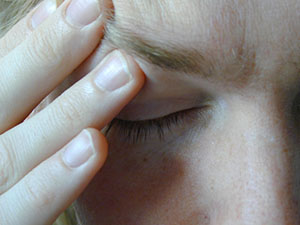 Myofascial pain syndrome (MPS) is a chronic condition that’s characterized by muscle spasms, aches and pains. Individuals experiencing this condition often have “trigger points” (TPs) which manifest these symptoms. Direct pressure applied to a TP area may activate localized sharp pain and aching sensation – a precursor to some level of pain or other nerve irritation occurring in another area. Symptoms of myofascial pain syndrome vary depending on the individual and his or her bodily reactions. Some people experience a very minimal light pain in the affected region, while others report severe, debilitating pain.
Myofascial pain syndrome (MPS) is a chronic condition that’s characterized by muscle spasms, aches and pains. Individuals experiencing this condition often have “trigger points” (TPs) which manifest these symptoms. Direct pressure applied to a TP area may activate localized sharp pain and aching sensation – a precursor to some level of pain or other nerve irritation occurring in another area. Symptoms of myofascial pain syndrome vary depending on the individual and his or her bodily reactions. Some people experience a very minimal light pain in the affected region, while others report severe, debilitating pain.
What Causes MPS?
There’s no definitive answer regarding what exactly causes myofascial pain syndrome; however, medical practitioners have successfully identified several risk factors, one of which is lack of sleep. The SleepFoundation.org recommends adults get 7-8 hours of sleep per night, but the fact is that only a fraction of adults actually get this amount. Over time, lack of sleep can affect the nervous system, increasing the risk of MPS.
Depression and emotional instability are also known to play a role in myofascial pain syndrome. Again, the reason for the link remains unclear, but doctors believe people with depression are more likely to develop this condition.
Is It Really MPS?
Trying to distinguish between normal aches and pains and myofascial pain syndrome isn’t always an easy task. Nearly everyone will experience muscle tenderness and pain at some point. When you get home from a long day at work, you may feel a general soreness in your muscles. This is completely normal and should cause no reason for concern.
The primary difference between myofascial pain syndrome and muscle soreness is that MPS doesn’t go away after resting. If you continue to feel sore in a particular muscle group, and you are also experiencing muscle spasms, you should consult with your primary care physician.
Massage Therapy
There are treatment options available for myofascial pain syndrome. Regular sessions of massage therapy including de-activating TPs can ease muscle spasms while promoting blood flow to the affected area. Additionally, the nervous system is calmed down, which can facilitate better sleep and sense of well-being. Physical therapy involving gentle movement to encourage tissue relaxation, and gradual introduction of strength training has proven effective in treating this condition. This subsequently alleviates pain and discomfort associated with MPS.
Acupuncture
Acupuncture is another powerful treatment option for people suffering from MPS. This practice involves the placement of thin needles to stimulate the body’s own self-healing process. Researchers at the Taipei Veterans General Hospital in Taipei, Taiwan concluded acupuncture to be an “effective method for pain relief of patients with chronic MPS in the cervical and upper back regions.”
